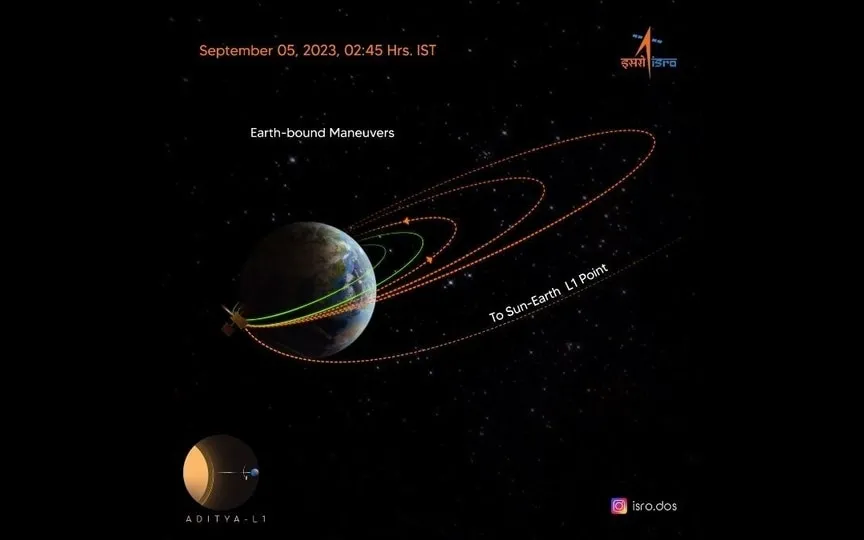ISRO Celebrates Third Triumph with Aditya-L1 Solar Mission
India’s groundbreaking space mission, Aditya L1, which aims to study the Sun, has reached a new milestone as it successfully completed its third manoeuvre around Earth. The Indian Space Research Organisation (ISRO) announced that the operation was carried out by the Telemetry, Tracking, and Command Network (ISTRAC) located in Bengaluru during the early hours of Sunday.
Continued success of Aditya L1
According to a PTI report, this critical Earth-bound maneuver (EBN#3) changed the spacecraft’s orbit and placed it at 296 km x 71,767 km. The next move is scheduled for September 15th around 2:00 AM.
Aditya-L1 is a pioneering Indian space observatory designed to study the Sun from a unique vantage point known as the first Sun-Earth Lagrange point (L1), located approximately 1.5 million kilometers from Earth.
Successful steps towards L1
Previously, the mission successfully completed its first and second Earth-bound maneuvers on September 3 and 5, respectively. One more Earth-bound orbit is planned before the spacecraft begins its journey to L1.
These maneuvers are vital because they help the spacecraft gain the necessary speed during its 16-day trip around Earth before heading to L1.
Aditya-L1 was launched aboard ISRO’s Polar Satellite Launch Vehicle (PSLV-C57) on September 2 from the Satish Dhawan Space Center in Sriharikota. It is expected to reach its planned L1 orbit in about 127 days.
Uninterrupted solar observation
This unique orbit allows the spacecraft to continuously observe the Sun without interruption, providing real-time information on the Sun’s activity and its effects on space weather.
Aditya-L1 carries seven scientific instruments developed by ISRO and national research laboratories. These instruments observe the various layers of the Sun and gather information using electromagnetic, particle and magnetic field detectors.
Four of the instruments directly observe the Sun, while the remaining three perform in situ studies of particles and fields at the Lagrange point L1, providing essential insights into the dynamics of the Sun in the interplanetary medium.
Mysteries of the Sun
The data collected by Aditya L1’s instruments will significantly contribute to the understanding of phenomena such as coronal heating, coronal mass ejections, flares, space weather dynamics and particle scattering.
In space exploration, Lagrange points are areas where small objects can maintain a stable position with minimal fuel consumption, thanks to the balance between the Sun’s and Earth’s gravitational forces. The Aditya L1 mission to L1 is a groundbreaking step in solar research and promises a wealth of scientific discoveries about our Sun.




